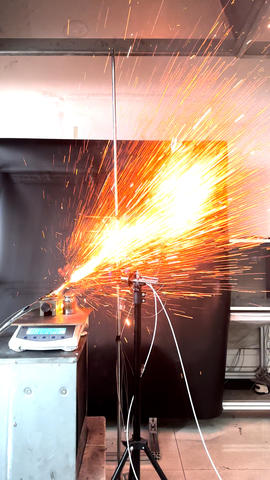
If a lithium-ion battery gets too hot or is damaged, it may undergo a chemical reaction called thermal runaway. This experiment, performed at Xi'an University of Science and Technology in collaboration with NIST, was designed to record the sounds a lithium-ion battery makes before and during thermal runaway.
Jian Chen/Xi'an University of Science and Technology
Researchers at the National Institute of Standards and Technology (NIST) have developed a way to use sound to detect when lithium-ion batteries are about to catch fire. The NIST team included Wai Cheong "Andy" Tam and Anthony Putorti.
Lithium-ion batteries are all around us: They can be in your phone, in your laptop, in an e-bike or an electric car. There may be several within arm's reach and hundreds of them in your building.
These batteries are popular because they can store a lot of energy in a small space. That quality makes them useful, but also brings danger. If a lithium-ion battery gets too hot or is damaged, it can catch fire or even explode. And the risk of battery fires is growing. In 2023, the New York City fire department responded to 268 residential fires started by batteries in e-bikes, which caused 150 injuries and 18 deaths.
These fires are so dangerous because they get blisteringly hot, almost instantly. A battery can emit a jet of flame up to 1100 C (2012 F), almost as hot as a blowtorch, and it reaches that temperature in about a second. This differs dramatically from other kinds of residential fires, which typically start slower as a smolder or a small flame. With those fires, there is more time for the smoke to reach a smoke alarm and warn people of the danger.
In addition to heating up faster, a lithium-ion battery doesn't produce much smoke to detect during the first stages of failure. By the time that limited smoke activates a traditional smoke alarm, it may be too late to prevent the fire from spreading. So it would be helpful to have a way to detect these fires early.
"While watching videos of exploding batteries, I noticed something interesting," said Tam. "Right before the fire started, the safety valve in the battery broke and it made this little noise. I thought we might be able to use that." He was not the first to make this observation, but he wanted to see if he could test the idea for himself.
">






